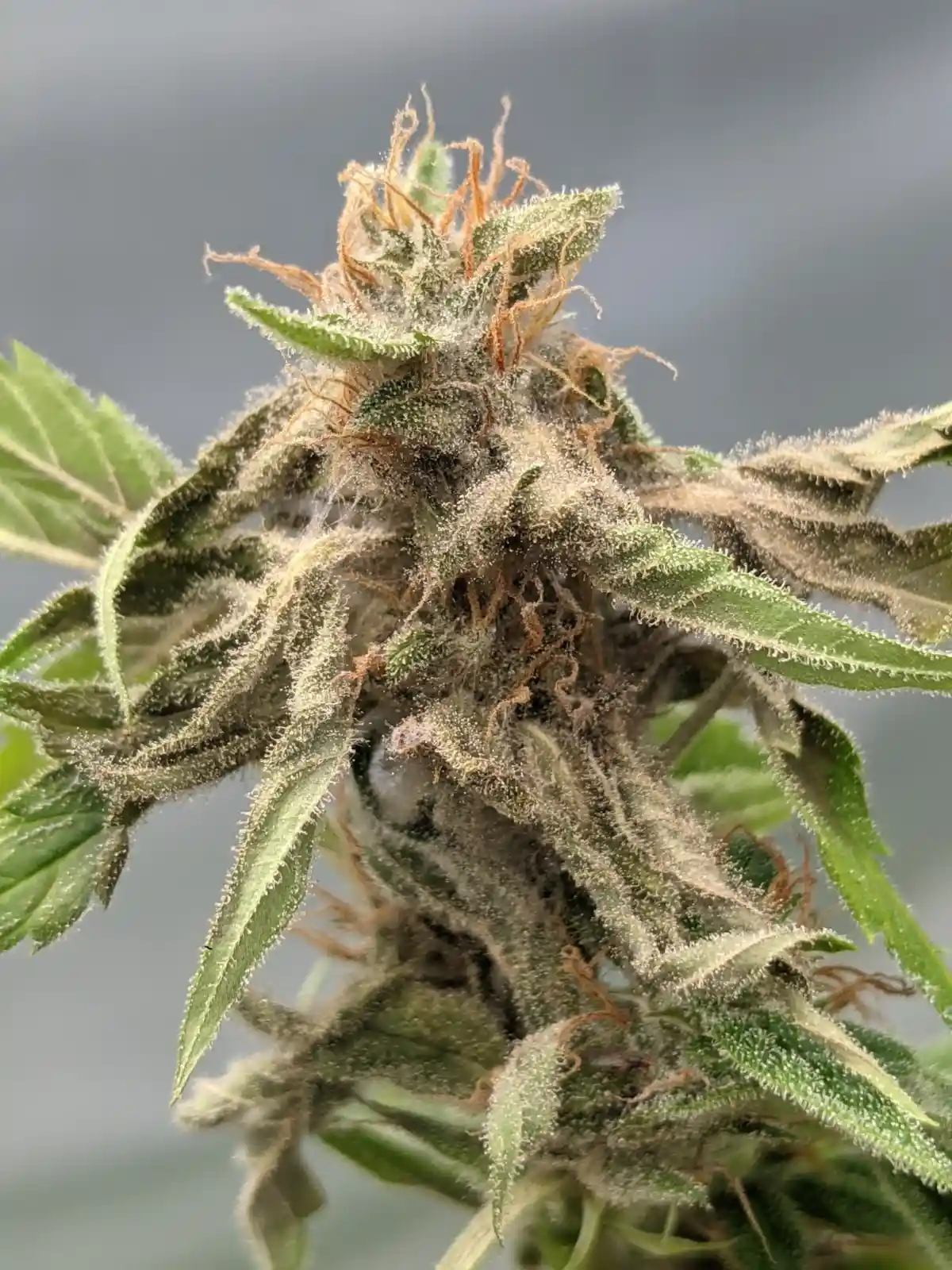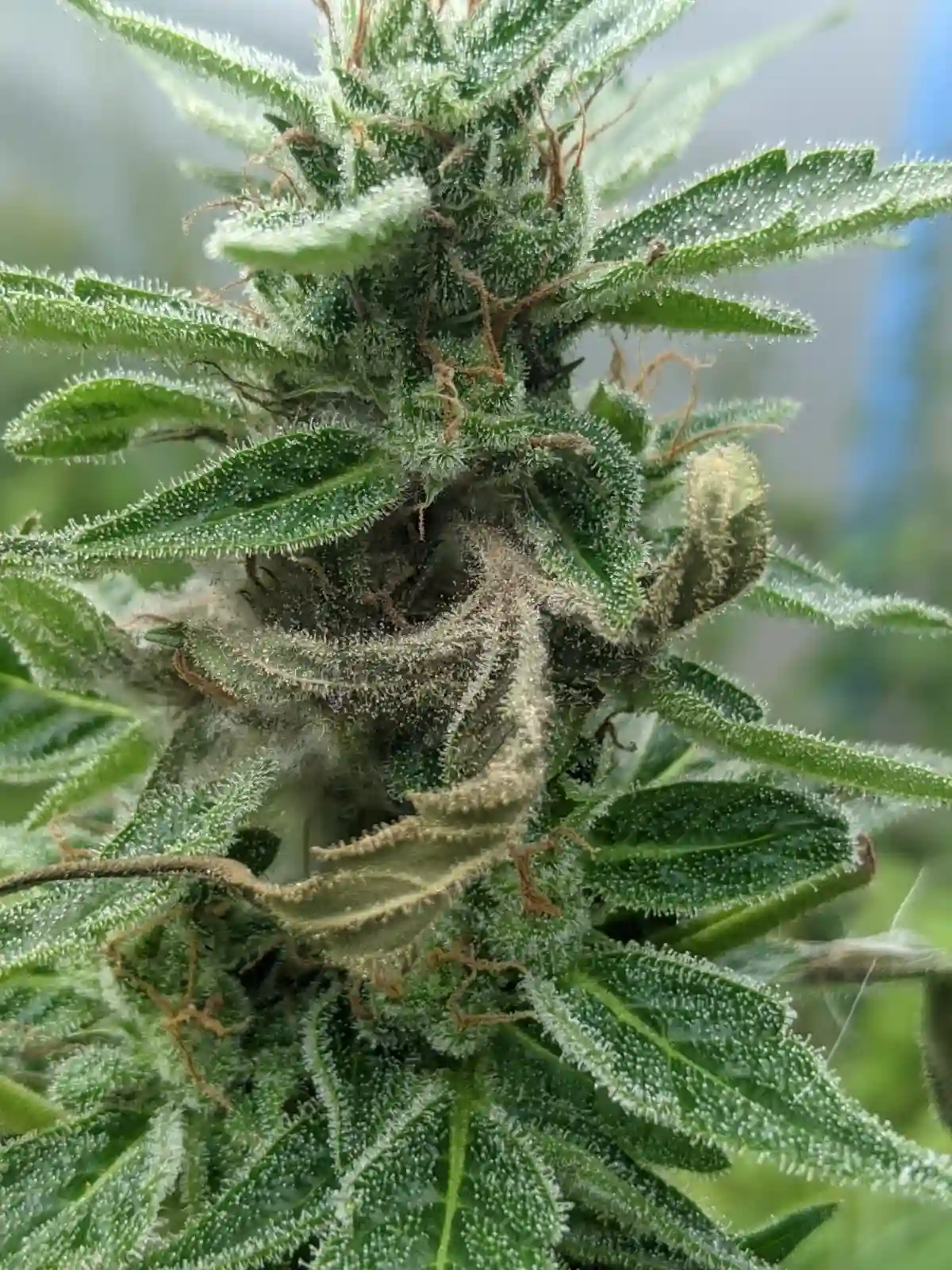Do you grow outdoors? It’s that time of year when the outdoor gardener’s thoughts turn towards cannabis bud mold prevention… As the temperature drops and the natural decay of Autumn kicks in, mold spores become active and your poor weed plants are sitting targets.
Many a weed harvest has been ruined this way, but if you’re prepared, you can put in place some effective cannabis bud mold prevention measures. We consulted the Paradise Seeds grow team for some essential tips to help you keep that mold away from your outdoor crop this Autumn!
1. Know Your Enemy
Cannabis bud mold (or botrytis) will announce itself quietly; perhaps the first sign it is present will be discoloration of a small leaf on a cola or a section of cannabis bud looking slightly off colour (often grey, blueish or off white). On closer inspection you will discover rot in your bud, spreading from the inside (which is why it’s so elusive).
By this time, cannabis bud mold has arrived and the only course of action available to you is to treat the issue, and treat it immediately by removing infected sections. If your buds are fairly advanced then wisdom says, cut your losses and cut down your plants to save your crop. In the greenhouse, once you have spotted mold it is already too late and you should crop the rest of your plant as soon as possible.
Make sure you sterilize your scissors (using surgical spirit) before and after removing and destroy all infected buds. Do not be fooled and think you can ‘cut out the bad bits’. These buds probably contain mold spores that you can’t see and you do not want these ending up in your lungs…

2. Bud Mold Prevention: The Basics
Act now and you stand a great chance of keeping this old enemy away from your plants! The key to beating mold is to have healthy plants and give them the best protection so they can finish the job of producing you a fine harvest!
In the greenhouse or in the garden, high humidity, surface moisture and poor air circulation are primary causes of cannabis bud mold. Therefore, make sure your plants have enough space around them to give good air flow and good sunshine exposure and make sure to address humidity issues.

In the greenhouse this means opening vents in the greenhouse, or adding fans if necessary. For outdoor plants the real challenge is preventing them from getting soaked in the rain so keep an eye on the weather reports! Possible solutions are moving your potted plants inside (some growers even set up a tent in the garden for this purpose) or cover your plant (use garden canes and plastic sheeting to set up a protective teepee).
3. Prune and Train Your Cannabis Plants
Getting that air flow to your cannabis plant may require you to do some pruning once the flowering stage begins. Giving your plants a lollipop trim will reduce the amount of foliage on your plant. You can also apply some gentle LST to the side branches to give your buds better exposure to light and air flow. With well spaced, smaller buds, even if you lose a handful to mold, you will still have many more left unscathed!
4. Adjust Your Watering Schedule
As the flowering stage develops, aim to water in the morning so that water doesn’t sit overnight. Also avoid getting leaves and buds wet (water only the base).
In many regions of northern Europe and America, Autumn can bring extended periods of rain (lasting for days), meaning high air humidity is omni-present. Therefore, it pays to plan ahead and dramatically reduce your watering as harvest time approaches.
One Paradise outdoor grower (52˚ N latitude) in a particularly wet region recommends stopping watering altogether, one to two weeks before a late October/early November harvest, to compensate for the high air humidity. Such action obviously requires advance planning to time your last nutrient feed and flush routine right.
5. Add Bud Mold Prevention to the Mix
Healthy plants will have the strength to resist unwelcome invaders, so a good Paradise Seeds tip is to add biological extracts of propolis or echinacea, tormentilla and aloe to reinforce your cannabis plant’s endogenous system.
While you can’t control the weather, you can control the pH of your soil. A higher pH will help to prevent cannabis bud mold from spreading and a frequent suggestion on grow forums is to use a milk spray on cannabis plants at risk from mold. Aside from changing the pH, research suggests milk particles exposed to natural light produce oxygen free radicals which are a great mold and mildew defence.
However, many growers are reluctant to spray their plants with milk and yes, the thought of ‘sour milk’ infused buds is a real turn off for any connoisseur! Alternative advice from the Paradise team is to add 2 tablespoons of natural yoghurt to 3 liters of water – once in early September and once in early October – and apply direct to the soil.
Here are two more proven cannabis bud mold prevention recipe suggestions from the Paradise Seeds grow team:
– Add 3 tablespoons of bicarbonate of soda to 3 liters of water, along with potassium soap.
This treatment is used for mold, although it is more commonly used to prevent mildew. Gardeners should spray the solution on the plant preferably 1 -2 weeks before the arrival of wet weather conditions – so if you know the Autumn rains are coming apply as a preventative measure in good time).
– Add 4 tablespoons of vinegar to 3 liters of water. (you can use any type – apple cider is a popular – but not Balsamic due to the high sugar content) This is another homemade remedy for plants affected by mildew. The solution should be sprayed on infected leaves and buds.
6. Takeaway guide to cannabis bud mold prevention
If you are new to growing outdoors and live in a region where cannabis bud mold is a problem, then plan your grow from day one. Some things to consider:
Choose the right strain! Some strains are developed for cannabis bud mold resistance. For example, strains such as Paradise Seeds’ Wappa and White Noise have a reputations for good anti-mold qualities – this article details the best mold resistant strains.
Get training! using techniques such as LST and mainlining will allow you to develop a plant structure with best cannabis bud mold prevention qualities. You can sculpt your plant to take advantage of good branch spacing, good airflow, an even covering of consistent sized buds (ie not dominated by a few big, fat, mold inviting buds at the top of a plant). Check out our Paradise Seeds Skunkworks series on mainlining to get a step by step guide (see Episode 1 HERE)
Pots vs ground? You can grow bigger plants by planting direct in the ground but pots give you versatility. You can move them around to chase the sun and hide them from the rain! If planting in the ground avoid shaded areas.


